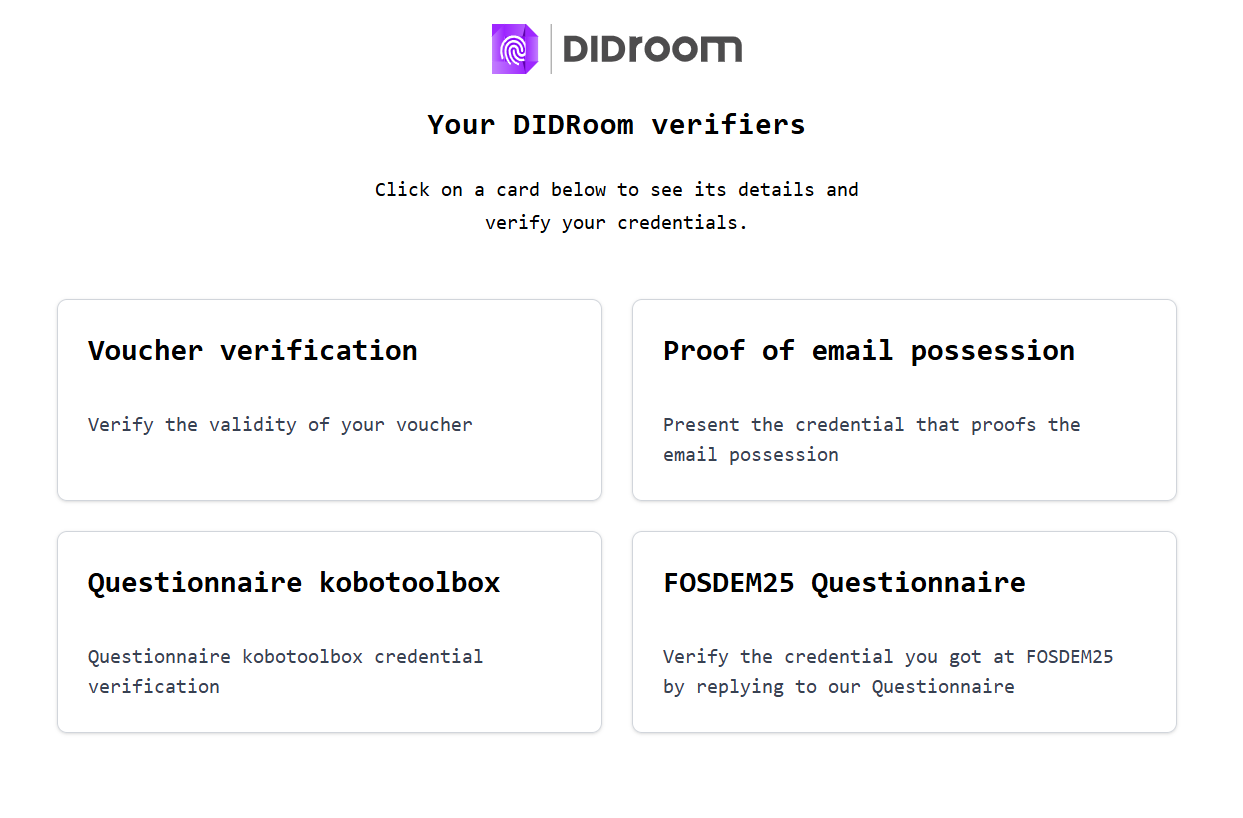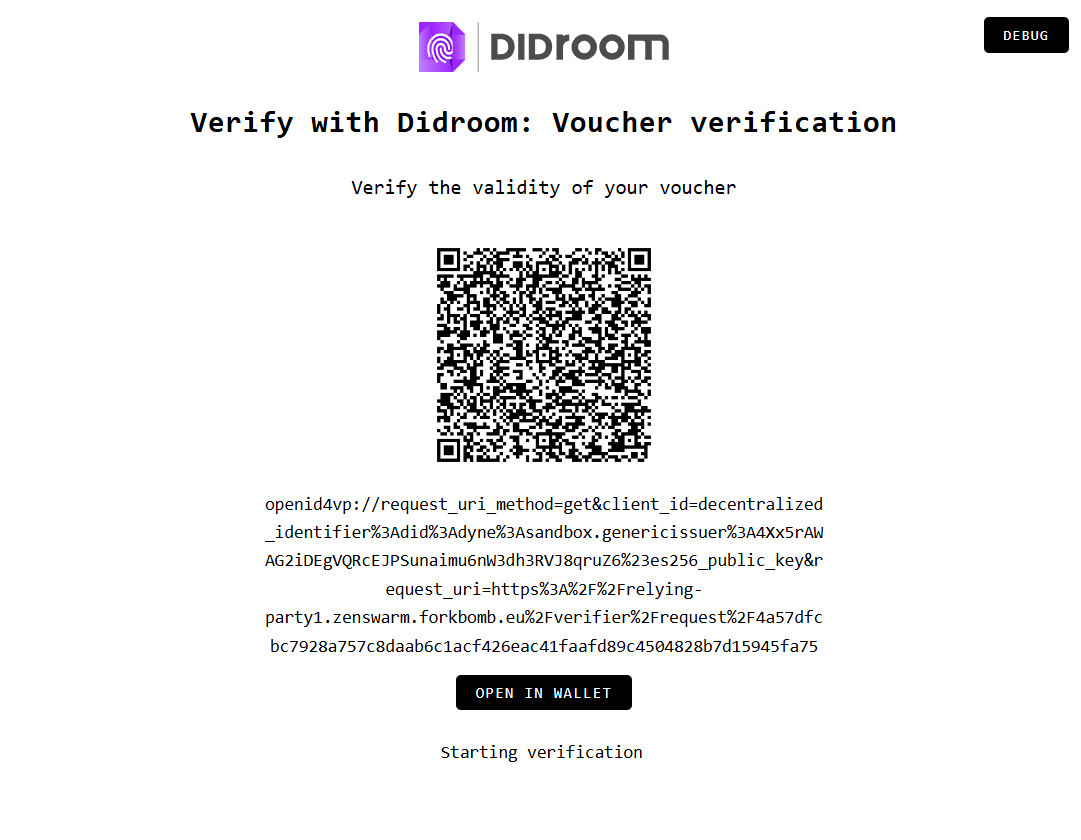Web Verifier
The Web Verifier is the latest DIDroom component for verifying credentials through the OpenID4VP 1.0 protocol. It replaces the legacy Mobile Verifier App for all modern verification flows.
Unlike the mobile app, which implemented a custom verification method, the Web Verifier runs entirely in the browser and supports standardized presentation requests and dynamic session handling.
Configuration and Operation
Each Web Verifier instance is configured through two linked components:
- Verification Template — defines the presentation request structure, credential types, and trust conditions.
- Verification Flow — binds the template to a specific user-facing Verifier page and handles runtime execution.
Both are managed by the DIDroom Verification Microservice, which automatically generates the corresponding web interface and QR/URI endpoints. This microservice runs NCR (No-Code-Room) scripts powered by Zenroom to process OpenID4VP requests and evaluate presentation proofs securely within the browser.
Overview
Assuming the Verifier is deployed at: verifier.my-app.com/verifier
The Web Verifier is accessible at a URL like this:
verifier.my-app.com/verifier/8j7f77hq07m405vthrough a standard web interface looking like this:

Users land on a list of available verification flows, each represented by a card. Clicking on a card opens a dedicated Verifier page with a unique permanent link such as verifier.my-app.com/verifier/list :

For reference, see our test deployment here: https://relying-party1.zenswarm.forkbomb.eu/verifier/list
Each verifier page corresponds to a presentation request (expressed in DCQL format) that can be rendered both as:
- a QR code, ready to be scanned by any compatible wallet, and
- a clickable OpenID4VP request URI (URN-style link) for browser-based verification.
Protocol and Standards
- Protocol: OpenID4VP 1.0
- Credential formats: W3C VC 2.0, SD-JWT, and soon ISO mdoc
- Flow type: Presentation request initiated via QR or URI
- Execution engine: NCR (No-Code-Room) + Zenroom
Verification Flow
- The verifier operator opens the page at
verifier.my-app.com/verifier/list. - They choose a verification flow (card) and open its permanent link.
- The wallet holder scans the QR code (or clicks the URI).
- Both the Wallet and the Web Verifier display the verification result in real time.
- Upon successful verification, the Verifier can:
- trigger a 301 redirect back to a predefined URL in the Wallet, and/or
- call an external API endpoint (webhook) to notify a third-party system.
Configuration and Access Control
- The Web Verifier is publicly accessible by default.
- Optionally, it can be placed behind an authentication layer if verification should be restricted to authorized users only.
Integration
For developers wishing to integrate with external systems or automate result handling, see the dedicated guide: Verifier — 3rd Party Integration
Legacy Mobile Verifier App
The earlier Mobile Verifier App (available on Android and iOS) remains functional but only supports a custom, non-OpenID4VP flow. It is maintained for backward compatibility but will not receive new protocol updates.
